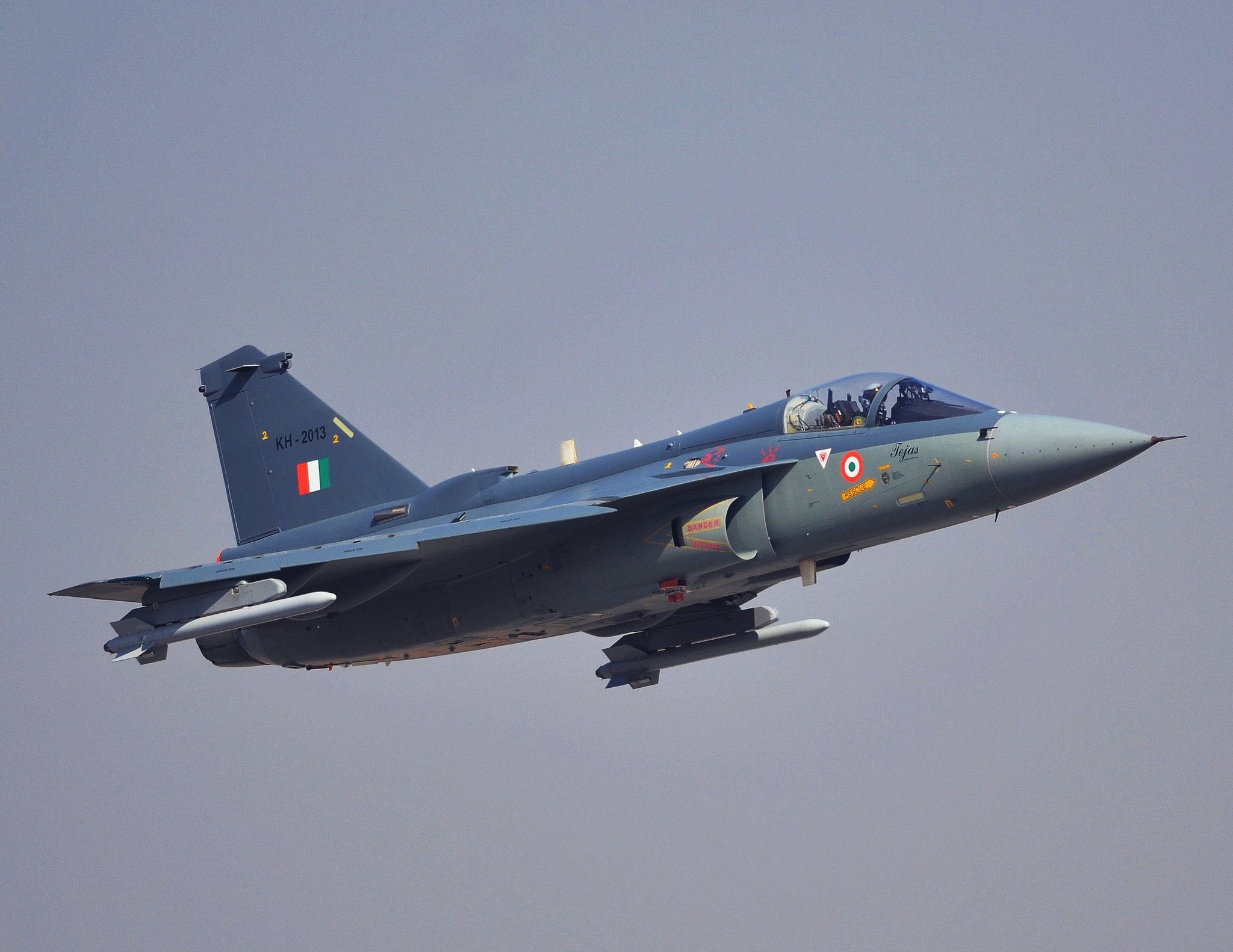In a future conflict between India and China, the two countries’ homegrown single-engine fighter jets are sure to face off with each other – the HAL Tejas light combat aircraft (LCA) and the Chengdu J-10.
Meet One Of World’s ‘Weakest Air Force’ That Boasts Rafale, Typhoon, F-15EX Jets & Now Eying F-35 Stealth Fighters
VIRAL In China: Beijing Will Conquer Taiwan By 2025, India’s Arunachal Pradesh By 2040 — Experts
Both are highly capable aircraft in their own right but the development, rollout, and upgrade trajectory have been more consistent for the J-10, with the HAL aircraft slightly lagging, bogged by delays and criticism.
The J-10 and the Tejas symbolize the painstaking techno-industrial effort of both nations, both first taking flight just three years apart. The J-10 first flew in 1998 and the Tejas in 2001.
However, the J-10 was a heavily redesigned, modified, and reverse-engineered version of the scrapped Israeli Lavi program, saving the Chinese in coming up with an airframe ground up. The Lavi itself had to be shelved by the Israelis under pressure from the US.
The LCA on the other hand merely received assistance from Dassault in the late 1980s, with the rest of the development undertaken by India’s state-run Hindustan Aeronautics Limited (HAL) itself, ground up, facing severe technology denials.

Both are single-engine, delta-wing configuration jets, with the J-10 being slightly longer and bigger. It has ventral air intakes, sporting swept-front canards, and the wings in the low wing position. The smaller and nimble-looking Tejas Mark-1A has a high-wing configuration with body-sided air intakes.
The J-10 has entered series production since 2005 with around 468 in service, comprising its three variants – the J-10A, J-10B, and the most advanced J-10C. The LCA Tejas Mark-1A on the other hand was only ordered in January this year, where 83 will begin reaching the IAF from 2023 onwards.
Why US F-16 Pilots Were Ordered To Ram Their Aircraft Into A Passenger Plane During 9/11 Attacks
Tejas & J-10 — Hits & Misses
The J-10B was a thrust vectoring variant, flying with the indigenous WS-10B engines, giving it super maneuverability, a decisive advantage in a dogfight.
However, some experts believe that with a low ‘wing loading’, Tejas has an edge in high altitude fighting, sustained turn rate, climb rate, and cruising speed, where it needs less thrust to maintain sustained flight.
Even its poor thrust-to-weight ratio can be improved by a better engine. Its smaller airframe also gives it a slight advantage, where it becomes difficult to spot in within-visual range (WVR) engagements.
China’s ‘Sniping’ J-20 Jets, A.I. Enabled AWACS — Beijing ‘Unveils’ Its Plan To Puncture US Muscle Power
Additionally, the upcoming Mark 2 is being designed to reduce drag by 8% and improve transonic acceleration by 20%.
Both the J-10 B and C, along with the LCA Mark 1A and upcoming Mark 2 have Active Electronically Scanned Array (AESA) radars. Tejas Mark 1A has the French-origin Thales AESA radar, based on its RBE2 system, while Mark 2 is most likely to have the Uttam radar. The Israeli ELTA 2052 too remains on offer.
Both LCA Mark 1A and Mark 2 can also fire the domestically-developed Beyond Visual Range Astra missile; Mk 1 first test-fired the weapon in 2019. For LCA Mark-2A, the IAF will demand a capability to fire the Astra Mk 2, which has a range of over 200 km.
The J-10B and C can fire the medium-range air-to-air missile the PL-10 and the ultra-long-range PL-15 BVR missile – the latter outranges all the missiles in its class in the world, at 300 km.
India Pitches Its HAL Tejas Fighter Jets To Australia; Pins Hope On Malaysia For The 1st Elusive Contract
By the middle of this year, the J-10C participated in a live-fire exercise while being powered by the domestically developed WS-10 Taihang engine, indicating a high degree of confidence in its stability. It seems Chinese engineers have corrected many of its flaws.
Until now, it was powered by Russia’s NPO Saturn AL-31 turbofan. The engine is also being now installed on other Chinese fighters like the J-11B and J-16, Chinese media has claimed.
The J-10C also sports an Infra-Red Search and Track (IRST) outside the cockpit, which the Mark-1A currently lacks, another certain feature on the Mark-2, which officials say, would be a “whole other aircraft.”
The area in which the J-10C might have a clear advantage over the Tejas is sensor fusion. The Chinese advances in electronics, computing, computer hardware, and now AI technologies have a bearing on the capability of its war machines.
‘Deal Of The Century’: Why Tata-Airbus Joint Venture Could Pave Way For India To Become A Global Aerospace Hub
Many experts also assume the J-10C to have a highly capable Electronic Warfare (EW) suite as well. This is assuming the People’s Liberation Army Air Force (PLAAF) would only field the J-10C variant by the time Mark-2A joins service by 2028-2030.
In a nutshell, the Tejas Mark-1A can go toe to toe with the J-10A, can only match the J-10B but would be considerably inferior to the J-10C, except if the LCA Mark-2 is rolled out with significantly advanced avionics, engines, and weapons packages, that puts it in the Generation 4++ category.
It all depends upon how fast and effectively the HAL and ADA roll out the new plane to the IAF’s liking.
- Parth Satam is a Mumbai-based journalist who has been covering India’s defense sector for more than a decade. He maintains a keen interest in defense, aerospace and foreign affairs and can be reached at satamp@gmail.com
- Follow EurAsian Times on Google News